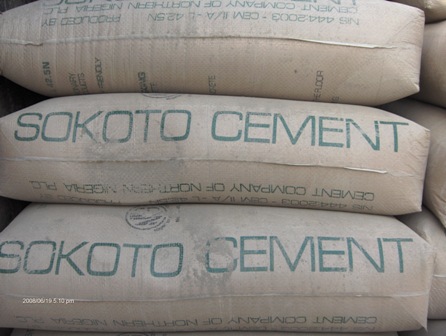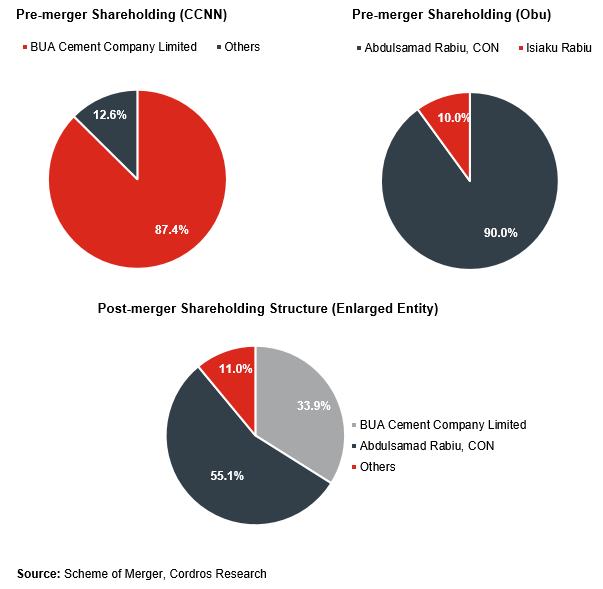HONEYWELL FLOUR: Earnings Rebound On Rising Capacity, Recovering Economy

The management of Honeywell Flour Plc recently made its full year earnings report for the period ended March 31, 2017 available to the investing public in line with its post-listing requirement of the Nigerian Stock Exchange (NSE). The numbers came the same time as the release date for the 2016 scorecard which allows investors and traders to plan their investment and forecast the company’s pattern.
The company’s performance for the period was impressive and did not reflect much of the harsh economic situation, especially with manufacturers coming under more intense pressure from the operating environment that negatively impacted cost and purchasing power at a time Nigeria’s economy was deep in recession, especially for most part of the financial year.
The company recorded a 5% increase in revenue from N50.88bn to N53.23bn; profit after tax grew significantly from a loss of N3.02bn to N4.3bn, a growth of 242% over the preceding year. Shareholders’ Funds and Total Assets increased by 219% and 49% to N52.33bn and N113.15bn respectively. Earnings per share rose from loss of 38 kobo in 2016 to 54 kobo.
Honeywell is technically placed at a fair value of N6.00 per share. The growth in its numbers were attributed to continuous investment in expansion of its production capacity to meet market demand and capture new markets. But increase in cost of production as a result of currency devaluation has put serious pressure on the company’s operations. This profitability reflected in Honeywell’s profit margin that is below international standard of 15%. The impressive full year earnings had further boosted the intrinsic value of the stock to give investors high margin of safety, considering its market value in a recovering stock market and economy.
The marginal growth in revenue was primarily caused by reduction in sales due to weak disposable income of the consumers that kept many products on the shelve but with the little improvement ineconomic fundamentals and positive data, helped by exchange gains resulting from the Central Bank of Nigeria (CBN) intervention in the foreign exchange market that reduced cost, impacting on the food segment of the company, comprising of flour, pasta, noodles, semolina, sugar, rice edible and snacks.
The food sector contributed 85% of a total revenue of N53.23bn in March 2017 from N50.88bn in March 2016. The marginal increase in sales is a major concern for investors if company with such business model and products that are essential to the body records such lean growth in revenue.

Source: NSE, Company Report & Investdata Research
The company’s rebounding earnings power was supported by decreasing cost of sales and other cost elements in its operations, added to other incomes from sales of by-products, exchange gain and sundry income that boosted the year’s bottom line. This was boosted by management’s cost cutting efforts and have not impacted much on bottomline, looking at profit margin for the period. With the economic recovery and continued turnaround in the company’s operation, shareholders should expect a better dividend payout in 2018 financial year.
Valuation/Recommendations
The company’s full year Book Value stands at N6.60, with Price/Earnings ratio of 3.24x on the strength of its strong earnings per share of 54 kobo.
Investors with short, medium and long term horizon should look the way of this stock. Traders and investors can take advantage of the low price to position now. We have revalued Honeywell and upgraded it to a BUY.
Technical View
The stock has been trending up for the last four months before pulling back, even as there were attempts to rebound that failed. But now that the stock is side trending with move to breakout the trend line above as the market expect its Q1 financials. The price action had formed a descending triangle chart pattern that revealed continuation of trend or reversal. Traders should watch for the first breakout at N2.00 and second resistance level at N2.12 as the market and analysts continue to interpret the numbers.
Honeywell Flour Mills is a major flour milling company in Nigeria initially registered as Gateway Honeywell Flour Mills Limited in 1985. However, in June 1995, a change ownership structure led to a change of name to Honeywell Flour Mills Limited (HFML). After its initial public offer (IPO) in 2008, the company became a public liability company and listed on the Nigerian Stock Exchange (NSE) in 2009. Honeywell Flour Mills PLC processes and packages flour and livestock feeds from wheat. The company’s products are used in the baking and confectionery industries.
Earnings Performance
Honeywell Flour’s mixed performance for the past five years has reflected in its sales revenue and profitability level that led to an unstable dividend payout for the period under review. The company’s sales revenue for the period has been on the rise, revealing its penetration into new markets, but as stated earlier, this has reflected on its bottom line, despite the fluctuating cost centres that continue to influence profit.
With the recovering economy and improving output from the manufacturing sector that has reflected on the company’s performance to place a fair value that matches the current market price, investor confidence and sentiments for the equity’s price to retain strength.
Nevertheless, other ratios such as the low Price to Earnings (P/E) ratio and high Book Value, when compared to current market price. All these considered, it will be appropriated to place the equity at an intrinsic value of N6 to reflect the recent numbers posted for 2017.
Over the past five years specifically, the company’s turnover grew by 16.45% to N53.23bn from N45.71bn in 2013 after touching a high of N55.08bn in 2014, while within the same period, profit after tax has oscillated to a negative position of N3.02bn in 2016 and low of N1.12bn 2015 from N2.84bn in 2013, representing 51.41% growth to N4.5bn.
The company’s profit level has been unstable in the five-year period and at the beginning of the financial year 2017. In the same vein, dividend payout has been irregular to indicate its earnings power that may result in investors retention of its shares, while the company’s current shareholding structure and float are expected to support its share price.
Profitability Ratios
The company’s rebounding earning power and low P/E ratio of 3.24x as against the 5.61x in 2013, has reduced investors’ waiting period to recoup their investment as at 2017 release date. Along with the high estimated Earnings Yield of 30.84% of the price.
Please note that the fluctuations recorded year-on-year in P/E ratio and Earnings Yield in the table below was due to the company’s unstable earnings and price movement. Estimated ratios show that the Book Value of company has not been stable in the last five years. Also, profit margin has been low significantly, due to the increasing cost of operations from a low of 2.28% in 2015 to 8.09% in 2017. Return on Equity for investors have been mixed also for five years as depicted in the table on Estimated Ratios.






